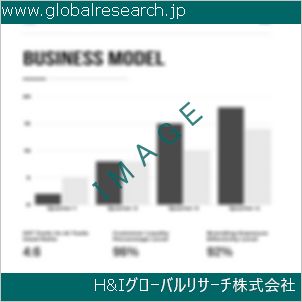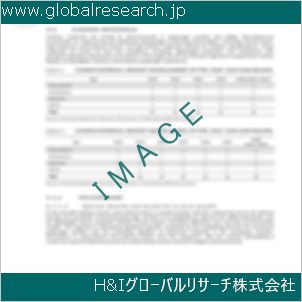Table of Contents
1 Industry Overview of Silica-Amorphous
1.1 Definition and Specifications of Silica-Amorphous
1.1.1 Definition of Silica-Amorphous
1.1.2 Specifications of Silica-Amorphous
1.2 Classification of Silica-Amorphous
1.3 Applications of Silica-Amorphous
1.3.1 Nuclear Application
1.3.2 Non-Nuclear Application
1.4 Industry Chain Structure of Silica-Amorphous
1.5 Industry Overview and Major Regions Status of Silica-Amorphous
1.5.1 Industry Overview of Silica-Amorphous
1.5.2 Global Major Regions Status of Silica-Amorphous
1.6 Industry Policy Analysis of Silica-Amorphous
1.7 Industry News Analysis of Silica-Amorphous
2 Manufacturing Cost Structure Analysis of Silica-Amorphous
2.1 Raw Material Suppliers and Price Analysis of Silica-Amorphous
2.2 Equipment Suppliers and Price Analysis of Silica-Amorphous
2.3 Labor Cost Analysis of Silica-Amorphous
2.4 Other Costs Analysis of Silica-Amorphous
2.5 Manufacturing Cost Structure Analysis of Silica-Amorphous
2.6 Manufacturing Process Analysis of Silica-Amorphous
3 Technical Data and Manufacturing Plants Analysis of Silica-Amorphous
3.1 Capacity and Commercial Production Date of Global Silica-Amorphous Major Manufacturers in 2023
3.2 Manufacturing Plants Distribution of Global Silica-Amorphous Major Manufacturers in 2023
3.3 R&D Status and Technology Source of Global Silica-Amorphous Major Manufacturers in 2023
3.4 Raw Materials Sources Analysis of Global Silica-Amorphous Major Manufacturers in 2023
4 Capacity, Production and Revenue Analysis of Silica-Amorphous by Regions, Types and Manufacturers
4.1 Global Capacity, Production and Revenue of Silica-Amorphous by Regions 2019-2024
4.2 Global and Major Regions Capacity, Production, Revenue and Growth Rate of Silica-Amorphous 2019-2024
4.3 Global Capacity, Production and Revenue of Silica-Amorphous by Types 2019-2024
4.4 Global Capacity, Production and Revenue of Silica-Amorphous by Manufacturers 2019-2024
5 Price, Cost, Gross and Gross Margin Analysis of Silica-Amorphous by Regions, Types and Manufacturers
5.1 Price, Cost, Gross and Gross Margin Analysis of Silica-Amorphous by Regions 2019-2024
5.2 Price, Cost, Gross and Gross Margin Analysis of Silica-Amorphous by Types 2019-2024
5.3 Price, Cost, Gross and Gross Margin Analysis of Silica-Amorphous by Manufacturers 2019-2024
6 Consumption Volume, Consumption Value and Sale Price Analysis of Silica-Amorphous by Regions, Types and Applications
6.1 Global Consumption Volume and Consumption Value of Silica-Amorphous by Regions 2019-2024
6.2 Global and Major Regions Consumption Volume, Consumption Value and Growth Rate of Silica-Amorphous 2019-2024
6.3 Global Consumption Volume and Consumption Value of Silica-Amorphous by Types 2019-2024
6.4 Global Consumption Volume and Consumption Value of Silica-Amorphous by Applications 2019-2024
6.5 Sale Price of Silica-Amorphous by Regions 2019-2024
6.6 Sale Price of Silica-Amorphous by Types 2019-2024
6.7 Sale Price of Silica-Amorphous by Applications 2019-2024
6.8 Market Share Analysis of Silica-Amorphous by Different Sale Price Levels
7 Supply, Import, Export and Consumption Analysis of Silica-Amorphous
7.1 Supply, Consumption and Gap of Silica-Amorphous 2019-2024
7.2 Global Capacity, Production, Price, Cost, Revenue, Supply, Import, Export and Consumption of Silica-Amorphous 2019-2024
7.3 USA Capacity, Production, Price, Cost, Revenue, Supply, Import, Export and Consumption of Silica-Amorphous 2019-2024
7.4 EU Capacity, Production, Price, Cost, Revenue, Supply, Import, Export and Consumption of Silica-Amorphous 2019-2024
7.5 China Capacity, Production, Price, Cost, Revenue, Supply, Import, Export and Consumption of Silica-Amorphous 2019-2024
7.6 Japan Capacity, Production, Price, Cost, Revenue, Supply, Import, Export and Consumption of Silica-Amorphous 2019-2024
8 Major Manufacturers Analysis of Silica-Amorphous
8.1 Manufacturer One
8.1.1 Company Profile
8.1.2 Product Picture and Specifications
8.1.2.1 Type I
8.1.2.2 Type II
8.1.2.3 Type III
8.1.3 Capacity, Production, Price, Cost, Gross and Revenue
8.1.4 Contact Information
8.2 Manufacturer Two
8.2.1 Company Profile
8.2.2 Product Picture and Specifications
8.2.2.1 Type I
8.2.2.2 Type II
8.2.2.3 Type III
8.2.3 Capacity, Production, Price, Cost, Gross and Revenue
8.2.4 Contact Information
8.3 Manufacturer Three
8.3.1 Company Profile
8.3.2 Product Picture and Specifications
8.3.2.1 Type I
8.3.2.2 Type II
8.3.2.3 Type III
8.3.3 Capacity, Production, Price, Cost, Gross and Revenue
8.3.4 Contact Information
8.4 Manufacturer Four
8.4.1 Company Profile
8.4.2 Product Picture and Specifications
8.4.2.1 Type I
8.4.2.2 Type II
8.4.2.3 Type III
8.4.3 Capacity, Production, Price, Cost, Gross and Revenue
8.4.4 Contact Information
8.5 Manufacturer Five
8.5.1 Company Profile
8.5.2 Product Picture and Specifications
8.5.2.1 Type I
8.5.2.2 Type II
8.5.2.3 Type III
8.5.3 Capacity, Production, Price, Cost, Gross and Revenue
8.5.4 Contact Information
…
9 Marketing Trader or Distributor Analysis of Silica-Amorphous
9.1 Marketing Channels Status of Silica-Amorphous
9.2 Traders or Distributors with Contact Information of Silica-Amorphous by Regions
9.3 Ex-work Price, Channel Price and End Buyer Price Analysis of Silica-Amorphous
9.4 Regional Import, Export and Trade Analysis of Silica-Amorphous
10 Industry Chain Analysis of Silica-Amorphous
10.1 Upstream Major Raw Materials Suppliers Analysis of Silica-Amorphous
10.1.1 Major Raw Materials Suppliers with Contact Information Analysis of Silica-Amorphous
10.1.2 Major Raw Materials Suppliers with Supply Volume Analysis of Silica-Amorphous by Regions
10.2 Upstream Major Equipment Suppliers Analysis of Silica-Amorphous
10.2.1 Major Equipment Suppliers with Contact Information Analysis of Silica-Amorphous
10.2.2 Major Equipment Suppliers with Product Pictures Analysis of Silica-Amorphous by Regions
10.3 Downstream Major Consumers Analysis of Silica-Amorphous
10.3.1 Major Consumers with Contact Information Analysis of Silica-Amorphous
10.3.2 Major Consumers with Consumption Volume Analysis of Silica-Amorphous by Regions
10.4 Supply Chain Relationship Analysis of Silica-Amorphous
11 Development Trend of Analysis of Silica-Amorphous
11.1 Capacity, Production and Revenue Forecast of Silica-Amorphous by Regions and Types
11.1.1 Global Capacity, Production and Revenue of Silica-Amorphous by Regions 2024-2029
11.1.2 Global and Major Regions Capacity, Production, Revenue and Growth Rate of Silica-Amorphous 2024-2029
11.1.3 Global Capacity, Production and Revenue of Silica-Amorphous by Types 2024-2029
11.2 Consumption Volume and Consumption Value Forecast of Silica-Amorphous by Regions, Types and Applications
11.2.1 Global Consumption Volume and Consumption Value of Silica-Amorphous by Regions 2024-2029
11.2.2 Global and Major Regions Consumption Volume, Consumption Value and Growth Rate of Silica-Amorphous 2024-2029
11.2.3 Global Consumption Volume and Consumption Value of Silica-Amorphous by Types 2024-2029
11.2.4 Global Consumption Volume and Consumption Value of Silica-Amorphous by Applications 2024-2029
11.3 Supply, Import, Export and Consumption Forecast of Silica-Amorphous
11.3.1 Supply, Consumption and Gap of Silica-Amorphous 2024-2029
11.3.2 Global Capacity, Production, Price, Cost, Revenue, Supply, Import, Export and Consumption of Silica-Amorphous 2024-2029
11.3.3 USA Capacity, Production, Price, Cost, Revenue, Supply, Import, Export and Consumption of Silica-Amorphous 2024-2029
11.3.4 EU Capacity, Production, Price, Cost, Revenue, Supply, Import, Export and Consumption of Silica-Amorphous 2024-2029
11.3.5 China Capacity, Production, Price, Cost, Revenue, Supply, Import, Export and Consumption of Silica-Amorphous 2024-2029
11.3.6 Japan Capacity, Production, Price, Cost, Revenue, Supply, Import, Export and Consumption of Silica-Amorphous 2024-2029
12 New Project Investment Feasibility Analysis of Silica-Amorphous
12.1 New Project SWOT Analysis of Silica-Amorphous
12.2 New Project Investment Feasibility Analysis of Silica-Amorphous
13 Conclusion of the Global Silica-Amorphous (CAS 112926-00-8) Industry 2024 Market Research Report
| ※参考情報 シリカゲル(Silica-Amorphous、CAS 112926-00-8)は、主に二酸化ケイ素(SiO₂)を構成成分とする無定形の物質であり、一般的には乾燥剤や吸湿剤として広く使用されています。シリカゲルは、乾燥環境を維持するための非常に効果的な材料であり、その特性と用途は多岐にわたります。 シリカゲルの特長として、まずその化学的安定性が挙げられます。シリカは通常、酸やアルカリに対して耐性を持ち、腐食しにくい性質を有しています。無定形シリカは、多孔質な構造を持っており、ここに水分やその他の物質を吸着する能力が強いという特性があります。このため、湿気を取り除くための非常に優れた材料とされています。 種類については、シリカゲルには主に「白色シリカゲル」と「青色シリカゲル」の2つのタイプがあります。白色シリカゲルは、特に紫外線による分解に強く、比較的安定した吸水性を持っています。一方、青色シリカゲルは、色素が添加され、湿気を吸収することで色が変わる特性があります。青色シリカは、乾燥状態では青色を示し、吸湿するとピンク色に変化するため、視覚的に湿気の状態を示す優れた機能を持っています。 シリカゲルの用途は多岐にわたり、工業、家庭、医療などさまざまな分野で利用されています。最も広く知られている使い方は、食品や薬品の保存における乾燥剤としての使用です。湿気を取り除くことで、製品の品質を保ち、長期保存を可能にします。また、電子機器や電池のパッケージ内に使用されることも多く、金属の腐食を防ぐ役割を果たしています。 医療分野においても、シリカゲルはさまざまな用途があります。例えば、医薬品の貯蔵や、湿気を嫌う化学物質の安定化に利用されています。さらに、シリカゲルはコスメや美容製品の中に含まれることもあり、商品の劣化を防ぐための手段として役立ちます。 環境技術においても、シリカゲルの特性は重要です。特に、水処理や脱水プロセスにおいて、合成添加物や化学薬品を使わずに自然な方法で水分を取り除く能力があります。そのため、シリカゲルは持続可能な材料としても注目されています。 シリカゲルに関連する技術としては、ナノシリカの研究が進んでいます。ナノサイズのシリカ粒子は、その広い表面積と吸着特性から、新しい材料としての応用が期待されています。また、シリカゲルの性能を向上させるために、表面処理や添加剤の研究も行われています。これにより、特定の分野や条件に適したシリカゲルの開発が進められています。 シリカゲルの取り扱いには注意が必要です。吸湿性が高いため、使用する際には直射日光を避け、湿気の少ない場所で保存することが望ましいです。また、食品と接触する場合には、安全性に配慮した規格に従ったものを使用する必要があります。 今後、シリカゲルの需要はさらに増加するでしょう。特に、気候変動などの環境問題が深刻化する中で、エネルギー効率の向上や資源の有効活用が求められています。そのため、シリカゲルの持つ吸湿特性は、さまざまな分野での応用が期待され、持続可能な未来に向けて重要な役割を果たすことでしょう。 このように、シリカゲルはその特性、種類、用途、関連技術において多様な側面を持った材料であり、今後もさまざまな形で私たちの生活や産業に貢献していくことが期待されます。シリカゲルを適切に利用することで、環境への負荷を軽減しつつ、品質の高い製品の提供が可能になるでしょう。 |
❖ 免責事項 ❖
http://www.globalresearch.jp/disclaimer












